-
-
-
Projects/
Christopher Marcinkoski and Andrew Moddrell:
Hedge/
Port Architecture + Urbanism
-
Our proposal re-imagines the iconic british hedgerow as a flexible, nationwide ecological-infrastructure regime.
Deployed as a continuous, horizontally-thickened hedge complex (green lanes) in the right-of-ways and easements of existing and future electricity grid corridors, National Hedge represents an integrated, progressive reinterpretation of a culturally significant system of territorialization capable of supporting substantial ecological expansion as well as offering a contemporary and iconic image of infrastructural integration into the landscape of the UK.
-
National Hedge
Infrastructure conceptualized and designed to perform only one operation reflects a nineteenth-century mentality towards urbanization that misses the latent opportunities for synthesis and hybridization embedded within these already established network corridors. We see the desire to redesign the electricity pylon as an occasion to fundamentally re-conceive the broader urbanistic role of the entire electricity grid within the totality of the UK landscape, bundling ecological connectivity and habitat expansion with the necessary control and management of an elemental urban infrastructure system.
Our proposal re-imagines the iconic British hedgerow as a flexible, nationwide ecological-infrastructure regime. Deployed as a continuous, horizontally-thickened hedge complex (green lanes) in the right-of-ways and easements of existing and future electricity grid corridors, National HEDGE represents an integrated, progressive reinterpretation of a culturally significant system of territorialization capable of supporting substantial ecological expansion as well as offering a contemporary and iconic image of infrastructural integration into the landscape of the UK.
The intent of this approach is two-fold. The first objective is to integrate the electricity grid into the varied landscapes of the UK, not through formal exuberance or aesthetic mitigation, but through the compositing of seemingly oppositional landscape systems to create new, hybrid forms of urbanization. The second aspect is the reestablishment of a nationwide ecological regime that stitches together and reconnects the fragmented, eroding natural habitats of the UK countryside by linking established infrastructure easements and right of ways to the country’s most significant areas of natural preserve — the UK’s 15 National Parks.
Ultimately, the benefits of a hedgerow network of this scale are both significant and numerous. They include: cultural heritage; landscape character and texture; control and maintenance of the grid corridor; employment generation through required management and maintenance; continuous source of biomass; carbon and greenhouse gas sequestration; wildlife habitat and refuge; soil and water management; support of the UK Biodiversity Action Plan; and the creation of an iconic, integrated urban landscape system that can stand the test of time much like the electricity pylon itself.
-
Typical UK Pylon
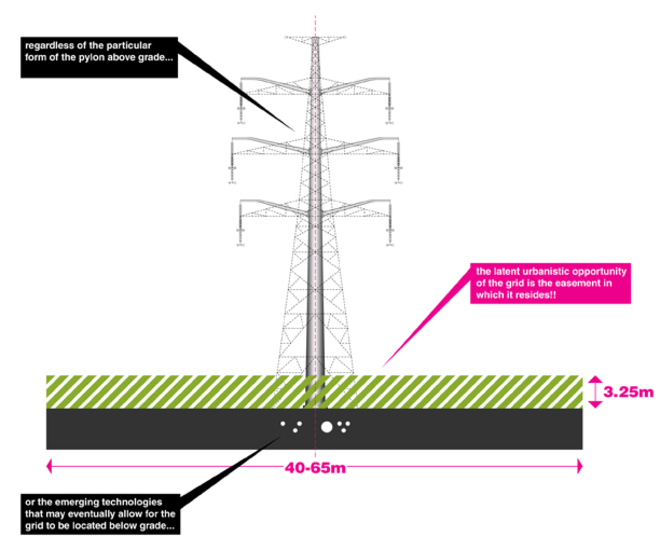
Latent Urbanistic Opportunity in the Easement
-
UK National Parks and National Hedge
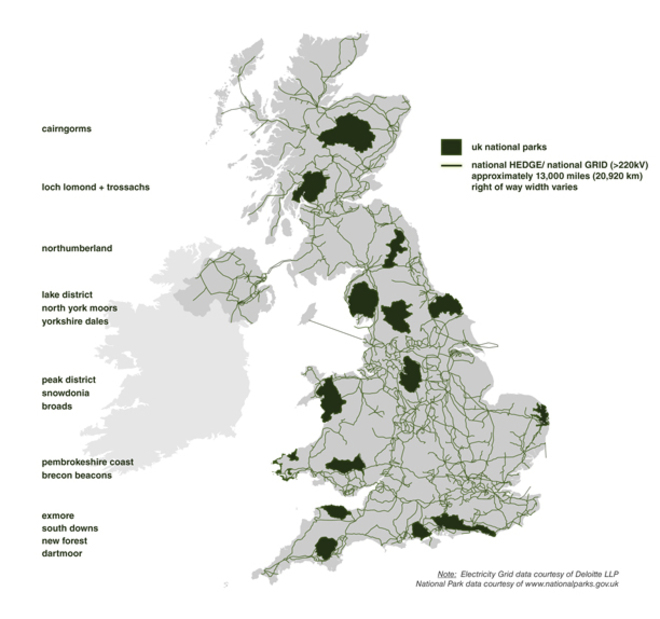
National HEDGE/National GRID (>220kV) approximately 21,000km
-
Prototypical Hedgerow Ecology

-
Bucolic Hedge View
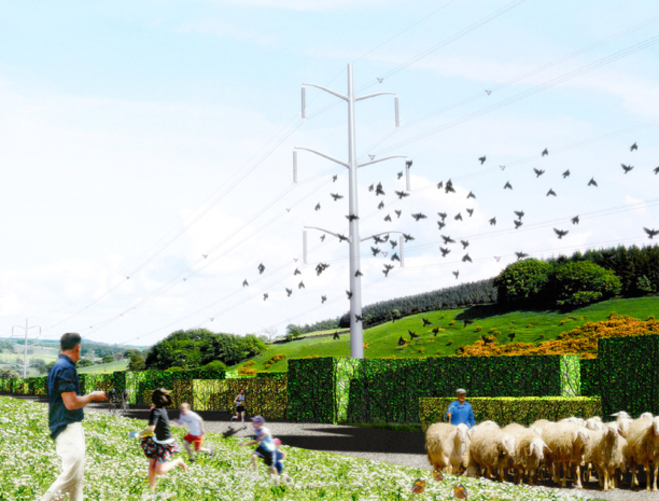
-
Industrial/Warehouse Scenario

It is assumed that in the context of a logistics or industrial area, the electricity pylons and grid in question have the least impact on the landscape. Yet the reality is this context offers the National HEDGE perhaps its greatest opportunity for impact. In this situation, the hedge complex is contigured to protect the continuity of the habitat corridors, but more importantly is able to manage the significant storm-water runoff that comes from vast impermeable adjacent territories, as welt as serving as a massive carbon sink for the concentrated greenhouse gas generation typified by these locations.
-
Suburban/Residential Scenario
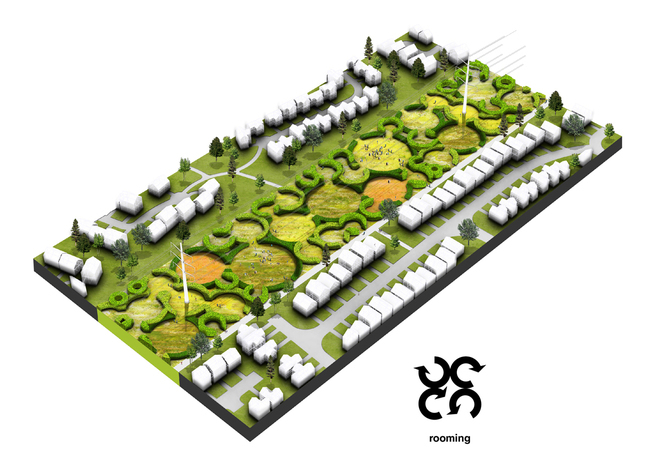
There is a great deal of debate regarding the health and safety effects of high-tension transmission lines. Acknowledging this consideration, where the grid does impact residential or suburban envlronmenls, the National HEDGE is configured to provide both continuous woodland edge habital in the form of the hedgerow complex, as well as meadow and grassland areas between the green lanes. As deemed appropriate, these meadows and fields can be utilized lor social and recreational activities when desired.
-
Agricurtural Scenario
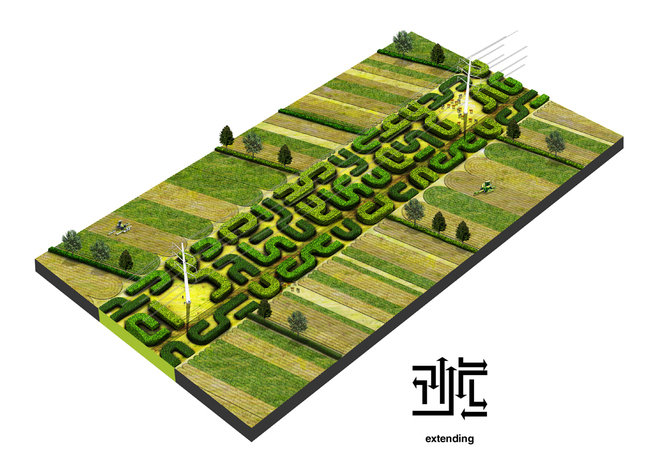
Agricultural land-use often has delrlmenlal effects for native wildlife habitat and can cause soil erosion and loss of groundwater II not managed properly. Traditional hedgerows were useful for mitigating these Impacts. and the National HEDGE win be as well, and exponentially so. Within an agricultural context, the hedge complex is configured to collect laterally and distribute linearly — water, insects, rodents. birds and small animals — through the fields to more expansive areas of habitat.
-
Woodland Scenario
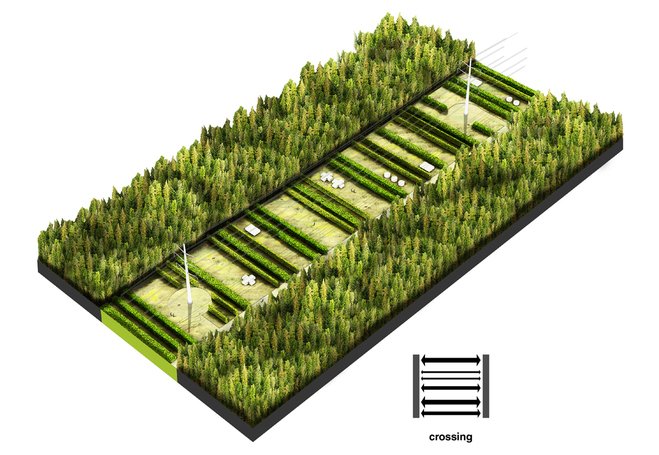
In the context ot a woodland, the National HEDGE is configured to promote cross-connectivity between the bisected forest masses, ensuring habitat continuity. The spacing and scale of the bar-coded hedge configuration is varied according to the particular landscape in which it resides. Managed bee hives and buttertly habitats can be deployed between the various hedgerows to increase the presence of pollinators and pest predators.
-
-
-
-
-
©2012 The authors and contributors
-